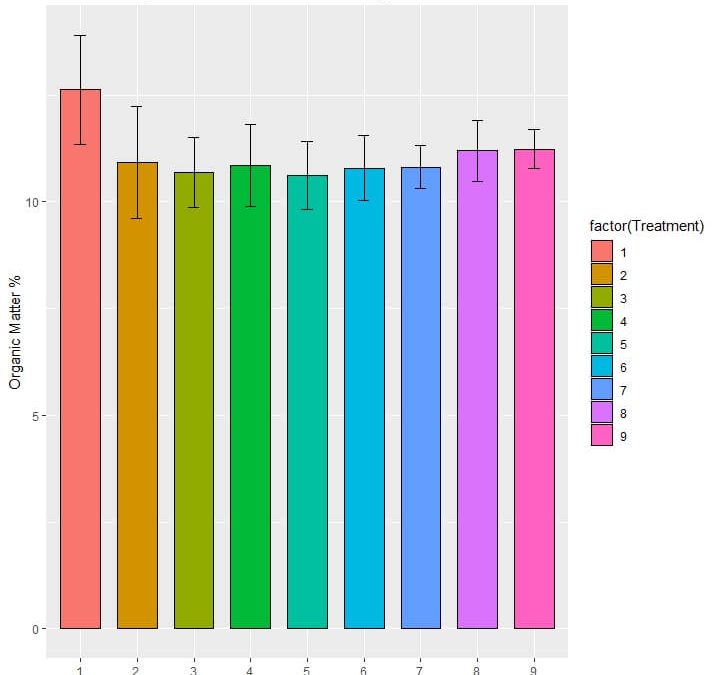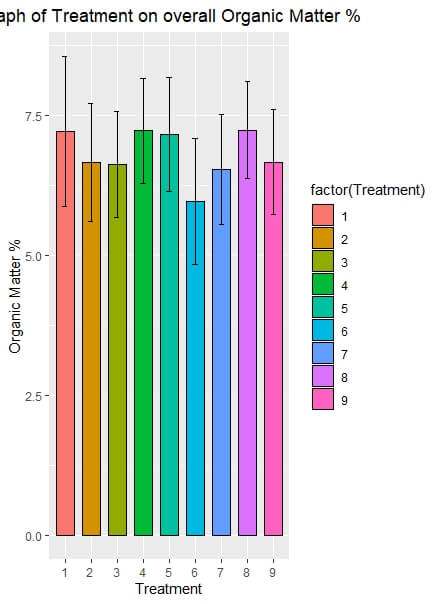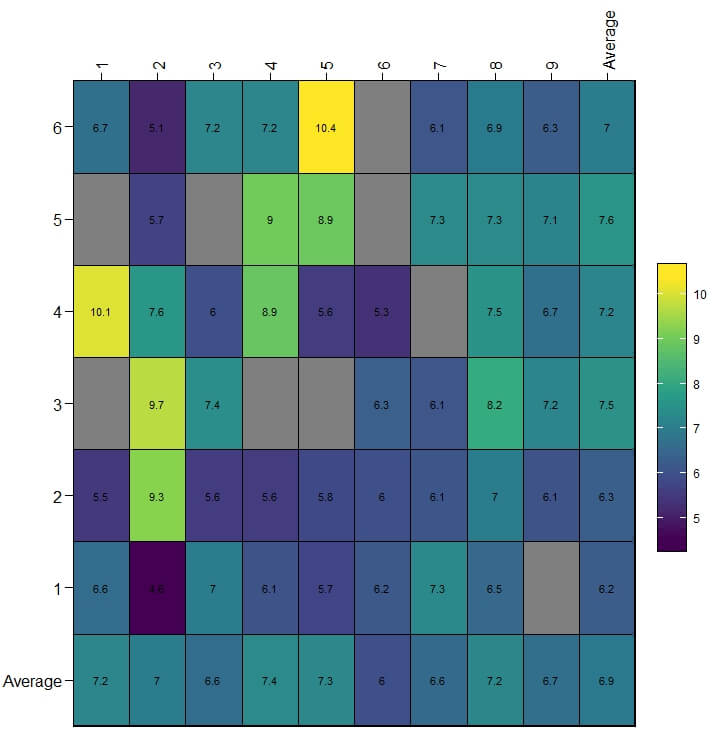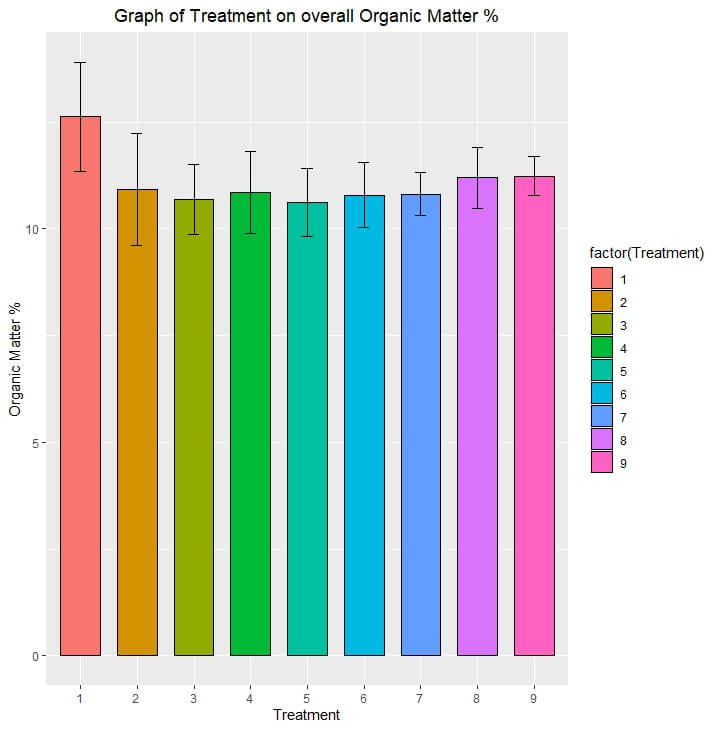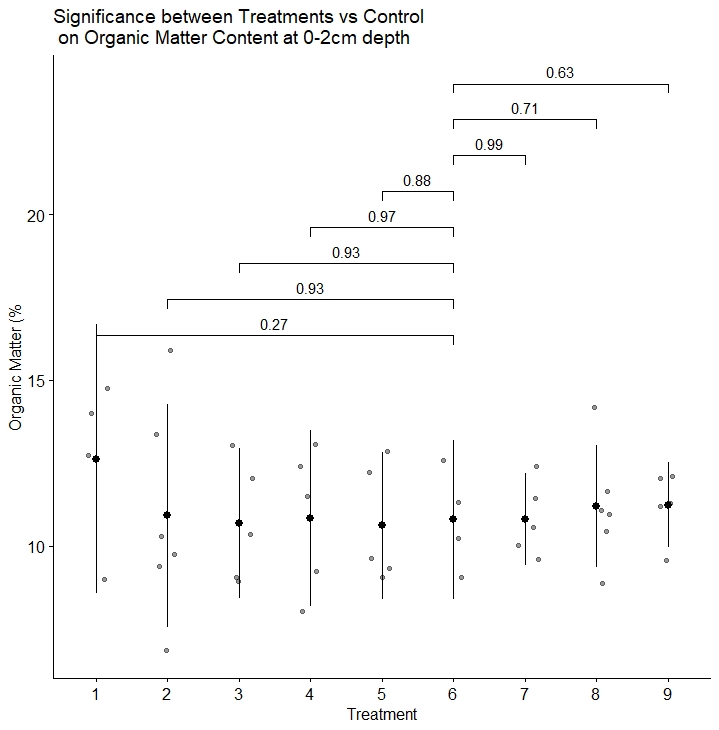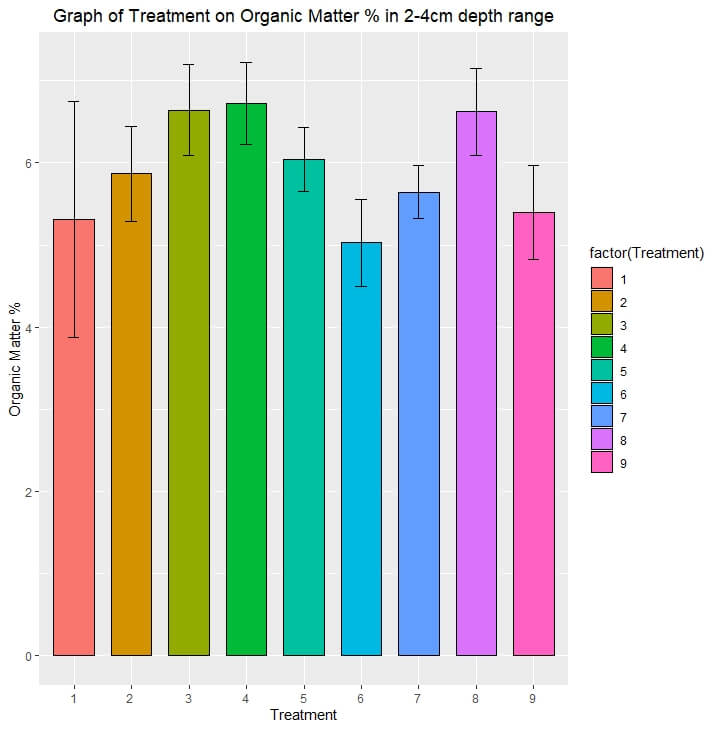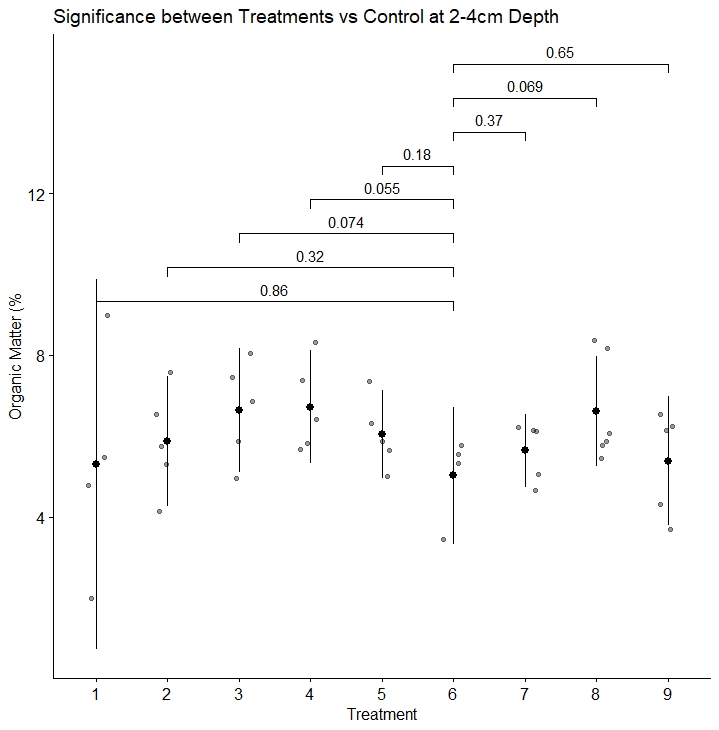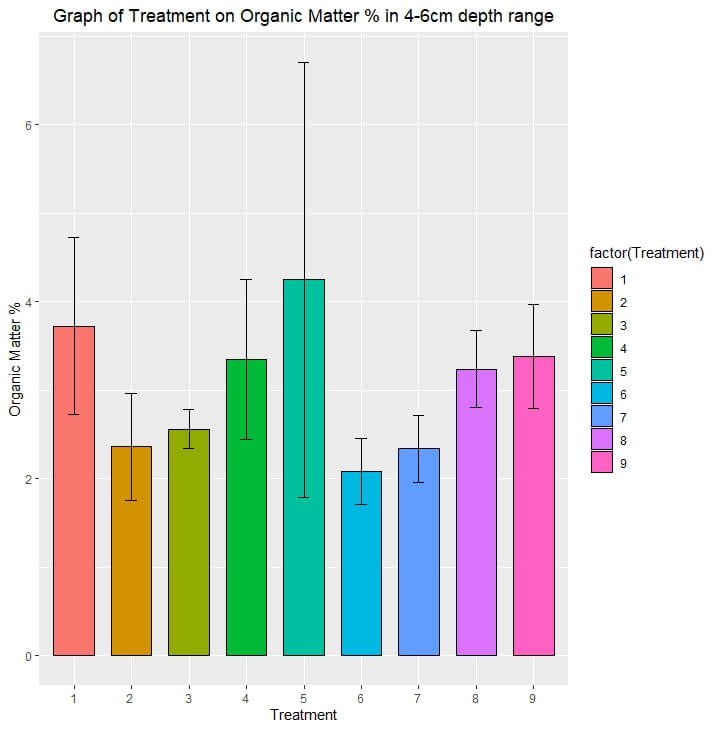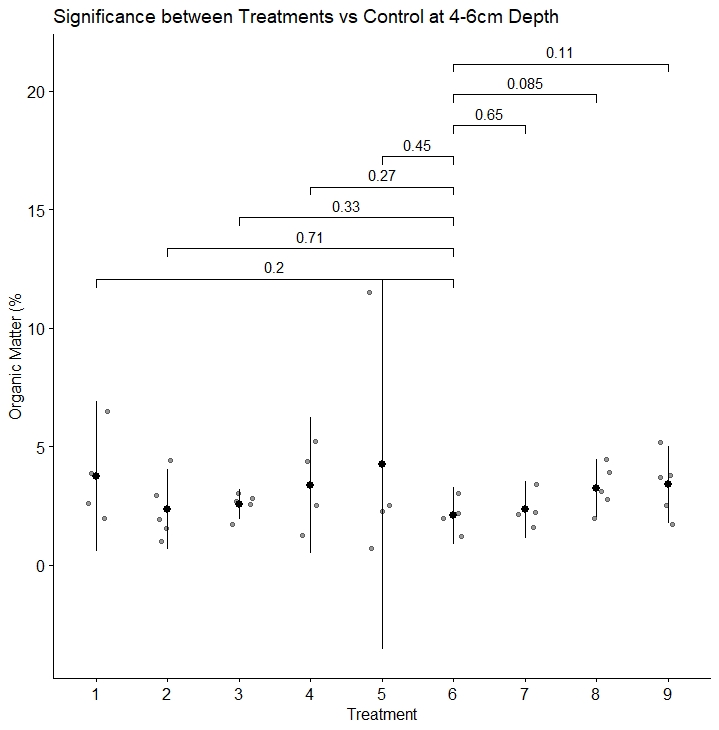Soil surfactants and organic matter
This is the last part of our 2022 research into soil surfactants. After testing 7 commercial soil surfactants for criteria such as their effects on surface hardness and disease suppression effects we looked at their impact on soil organic matter (SOM). We cannot find any work referencing if the use of these has any impact on SOM levels. So as independent turf agronomists we decided to do it ourselves.
As an update to this we just completed our 2024 soil surfactant trial which is the second year of the above trial.
Plugs were taken from all 54 plots and underwent loss of ignition (LOI) testing. They were dried at 60C for 48 hours before being ashed at 440C for 4 hours. The SOM contents were then calculated at 0-2cm, 2-4cm and 4-6cm.
Products tested were:
- Treatment 1: Tricure (Mitchells);
- Treatment 2: HyroForce Ultra (Indigo);
- Treatment 3: A proprietary formulation;
- Treatment 4: Propel (Floratine)
- Treatment 5: Hydroforce Recovery (Indigo);
- Treatment 6: Untreated control;
- Treatment 7: Half rates of Hydroforce Ultra;
- Treaetment 8: H20 Maximizer (Underhill) and
- Treatment 9: HydroLink Rapid (Globe).
Do soil surfactants impact on the overall organic matter content?
Over the entire depth of the samples (0-6cm) no significant differences were seen in OM contents in comparison to the untreated control. However, this doesn’t answer any questions relating to the development of surface organic matter.
The impact of soil surfactants on organic matter 0-2cm depth – surface organic matter content
Again no significant differences but Treatment 1 (Tricure) did have the highest SOM content.
Organic matter 2-4cm depth
Some interesting results here. Treatments 4 (Propel), 3 (Proprietary), and 8 (H20 Maximizer) all show significantly higher SOM contents at the 2-4cm depth at the 90% significance level. Whether this is as a result of a build up of SOM or an increase in root density is difficult to say based on this trial alone. The lowest SOM content was the untreated control.
Organic matter at 4-6cm depth
There were no significant differences in organic matter compared to the untreated control at the 4-6cm depth. The lowest organic matter content was the untreated control.
Discussion of results
The first thing is that this trial is limited in what it can show.
- The trial ran for 200 days but ideally a longer term study would show more conclusive results.
- Applications were made every four weeks which means in some instances the wetting agent activity may have stopped.
- Check out our Soil Wetting Agent selector to help with choosing your soil wetting agent.
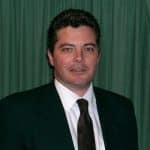
Jerry Spencer
Jerry has an Hons Degree in Soil Science (1988) from Newcastle Upon Tyne University. He then worked as a turf agronomist for the Sports Turf Research Institute (STRI) until 1993.
He gained a Grad Dip in Business Management from UTS in 1999. He has held a number of technical roles for companies such as Arthur Yates (Commercial Technical Manager) and Paton Fertilizers (Organic, turf specialty and controlled release fertiliser) portfolios.
In 2013 he established Gilba Solutions as independent sports turf consultants and turf agronomists. Jerry has written over 100 articles and two books on a wide range of topics such as Turf Pesticides and turfgrass Nutrition which have been published in Australia and overseas.

